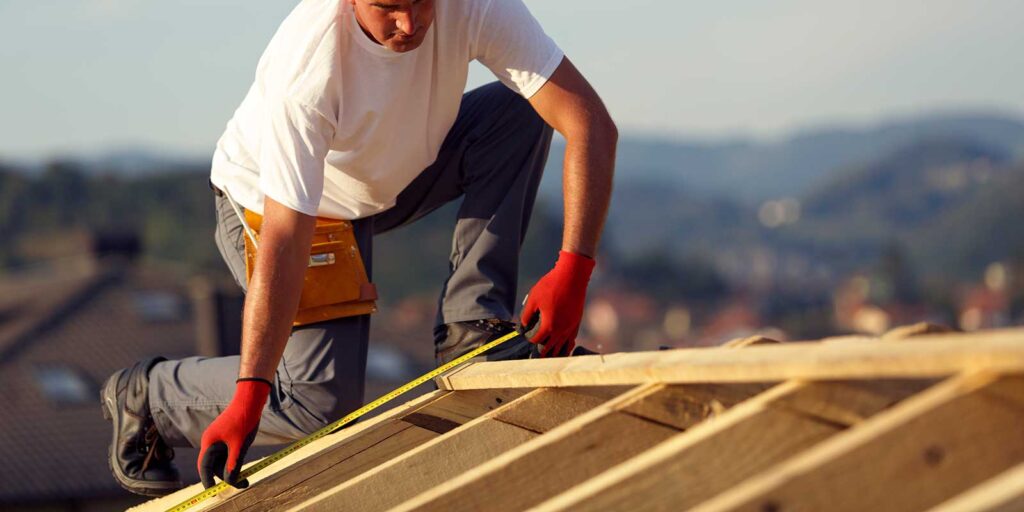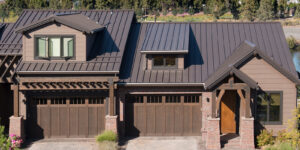It is tough to estimate roof replacement costs as there are so many variables that go into the final number. And your roof’s incline is one of them. The incline can be expressed in two measurements, pitch and slope, which many homeowners use interchangeably. However, according to the National Association of Certified Home Inspectors (NACHI), the distinction between the two is essential.
The roof pitch will be shown as a fraction to represent the upward rise (incline) over the distance between two walls (span). For example, a roof that rises 4 feet over a 24-foot span would be a 1/6 pitch.
The roof slope is that same incline shown as a ratio of the rise (incline) to run (a portion of the span), expressed in inches per foot. So, that same roof from above with a 1/6 pitch would have a slope of 4:12, rising four inches every foot.
While these two measurements are often interchanged when talking about your roof, they do not mean the same thing to your roofer. The slope provides more meaningful information as it affects water drainage and determines what type of roof covering should be installed.
Low slope and flat roofs are defined as roofs that rise 3 inches or less per foot or anything equal to or less than a 3:1 slope. Low-slope or flat roofs will require completely different materials than higher sloped roofs as the low level of incline does not shed water and debris from the roof.
Flat and low slope roofs should be covered with a rolled roofing material or even a spray or liquid-applied material, while higher sloped roofs can be covered in a variety of shingles or metal panels. This distinction is important as roofing materials’ performance is so affected by the slope that many manufacturers will void warranties when their roofing material is installed on a roof that does not have a compatible slope.
When you are getting a quote for a new roof, your contractor should provide you with a detailed scope of work that includes your roof slope. If the price seems much higher or lower than other quotes or than you expected, ask your contractor why. It’s possible that you have a very high or low slope roof. Don’t let a contractor talk you into a roofing material that doesn’t match your roof’s slope, like asphalt shingles on a low slope roof. If the wrong materials are installed, you will likely see roof leaks very soon, and the manufacturer’s warranty will be voided. That means you will end up paying much more for repairs in the long run.




